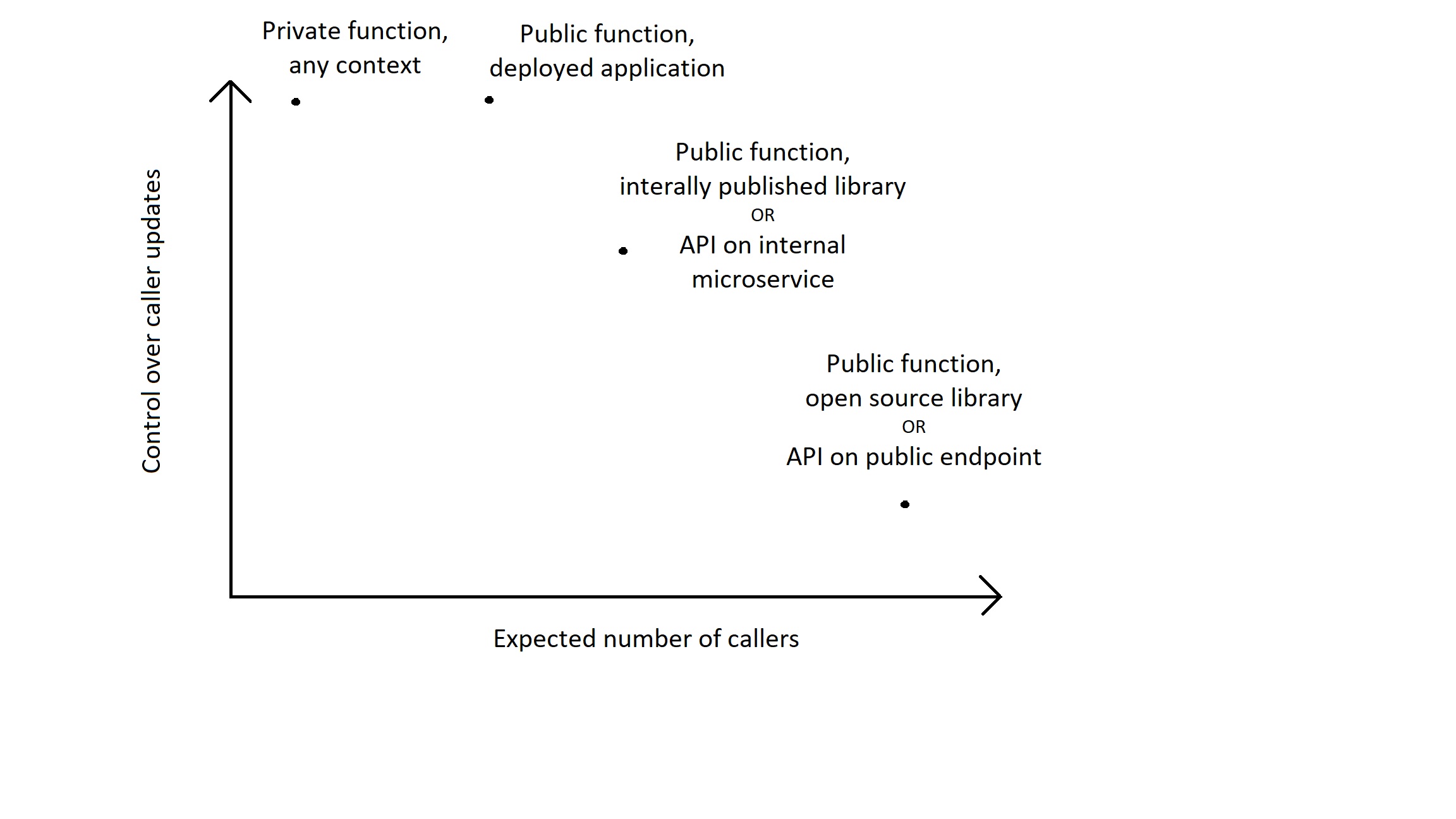Engineering for Reversibility
In a letter to Amazon’s shareholders, Jeff Bezos wrote:
Some decisions are consequential and irreversible or nearly irreversible – one-way doors – and these decisions must be made methodically, carefully, slowly, with great deliberation and consultation. If you walk through and don’t like what you see on the other side, you can’t get back to where you were before. We can call these Type 1 decisions. But most decisions aren’t like that – they are changeable, reversible – they’re two-way doors. If you’ve made a suboptimal Type 2 decision, you don’t have to live with the consequences for that long. You can reopen the door and go back through. Type 2 decisions can and should be made quickly by high judgment individuals or small groups.
This put two questions on my mind:
- Which software engineering decisions are reversible or irreversible?
- How can we make our decisions more reversible?
Changing Server Implementation
In principle, changing code that runs on servers is a clear Type 2 decision. It takes two clicks for me to update this site, and a more specialized git UI could easily reduce that to one.
In practice, there’s almost always some kind of friction to deployments. The two most common examples are pull requests and code reviews.
Organizations can encourage Type 2 thinking by:
- Investing in continuous deployment: The faster and more automated the deployments, the more quickly code can be reverted or patched if necessary.
- Minimizing deployment friction: Some friction, like code reviews, add enough value to be worth the tradeoff. But friction should be added sparingly, and with good reason. The more friction, the more engineers will start to see code changes as a Type 1 decision.
Changing Client Implementation
Client code is more difficult to change than server code, for a few reasons:
- Callers may have cached your server’s responses, and now need the TTL to expire.
- Users can leave their browser tab open for a long time, so they won’t fetch your new code.
App code has even more concerns:
- Google/Apple take days to vet your new app code, even when things go smoothly.
- Users may choose not to update their apps, once the new version is released.
Client code updates can be Type 1, but we can minimize the risk by:
- Using feature flags: Feature flags can be used to roll back instantly if new client code causes problems in production.
- Setting Cache-Control wisely: Be deliberate about your Cache-Control header choices. If a TTL on a file is long enough, then updating that file becomes a Type 1 decision.
- Supporting live app updates: For Android apps, support in-app updates. For iOS, support forced app updates. These can upset users, so be careful not to overuse them, but they’re a lifesaver if you have a critical bug fix or emergency.
Changing Data
Moving data or updating its format without downtime involves:
- Updating “read” code to pull from the new format, with fallback logic to the old one.
- Updating “write” code to target the new format rather than the old one.
- Running an ETL to migrate the existing data.
- Deleting the “read” code’s fallback logic.
- Dropping all the old data.
The difficulty of this process depends on:
- How many places in the code directly read/write the data
- How many objects need to be migrated.
Some best practices here are:
- Consolidate the read/write code as much as possible: The fewer places that the code touches the data source, the easier (1) and (2) will be.
- If you expect lots of data, treat the model as a Type 1 decision: The ETL in (3) has a
best case runtime of
O(numObjects). If there will be many objects, transforms will become prohibitively expensive.
Changing Contracts
A “contract” is any agreement between your code and those who call it. This includes:
- Function arguments and return values
- Service API requests and responses
- Documentation or tooling which either describes:
- What your code requires from its callers
- How your code will behave when called
Updating a contract involves:
- Adding a new function or endpoint to implement the new behavior
- Updating all callers to use the new function or endpoint
- Deleting the old function or endpoint.
The difficulty of this process depends on:
- How many callers will there be?
- How much control do you have over those callers?

Type 2 contracts live in the upper left quadrant. Type 1 contracts live in the lower right. The upper right is somewhere in between, depending on the size of your organization.
Some best practices here are:
- Minimize access levels:
privatecontracts are firmly a Type 2 decision.publicones may not be, depending on the context. It’s very easy to change aprivateone to apublic, but updating or removing apublicmay be very expensive. - Enlist beta testers for Type 1 contracts. Their feedback will be valuable, the beta period lets you iterate before making a full Type 1 commitment.
Conclusion
As a software engineer, the key lesson I took from Bezos’ advice is this:
Reversibility is a spectrum. Decisions can be made more reversible with the right tools, processes, and culture. Adopting these will empower teams and individuals to move faster and act more with more autonomy.